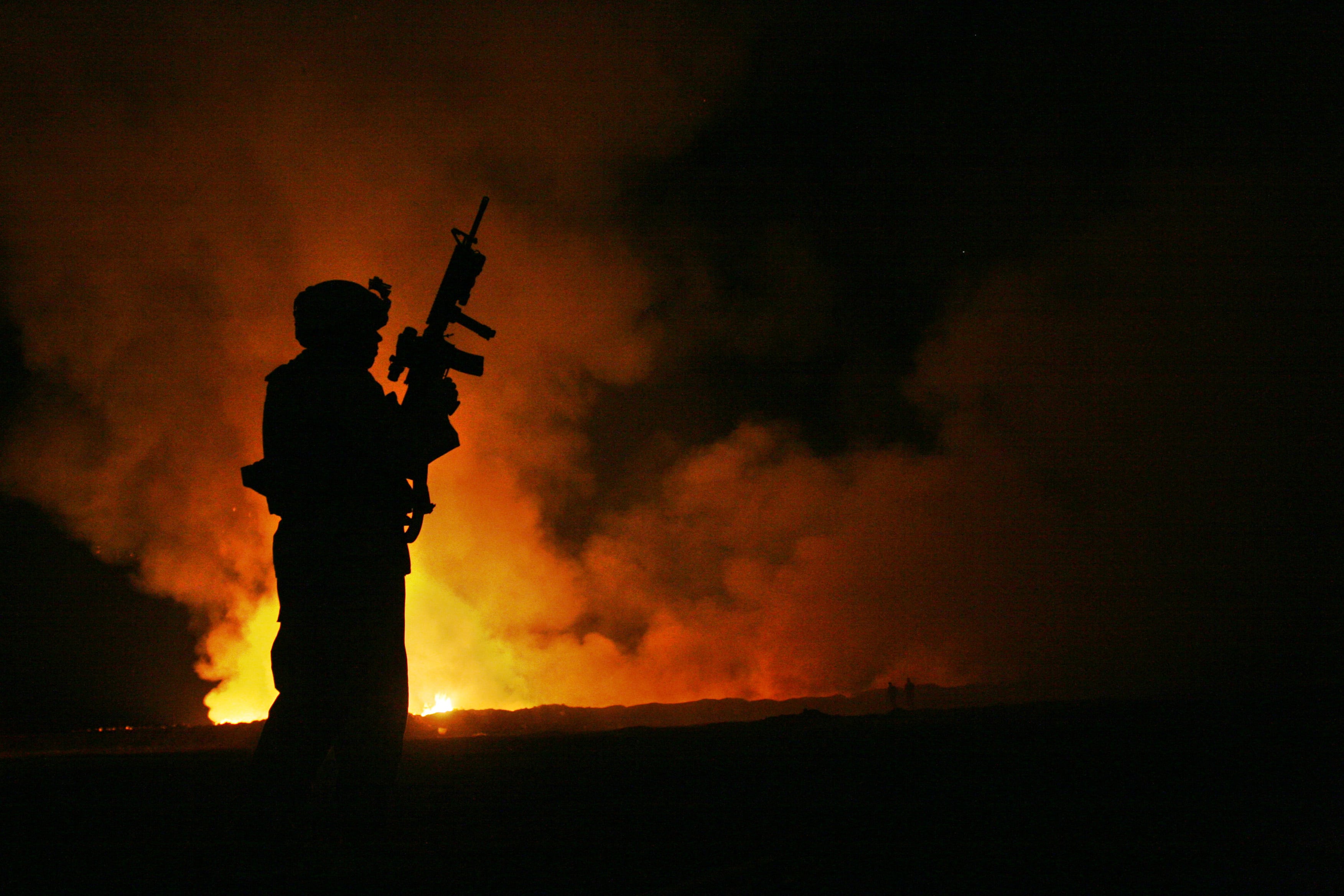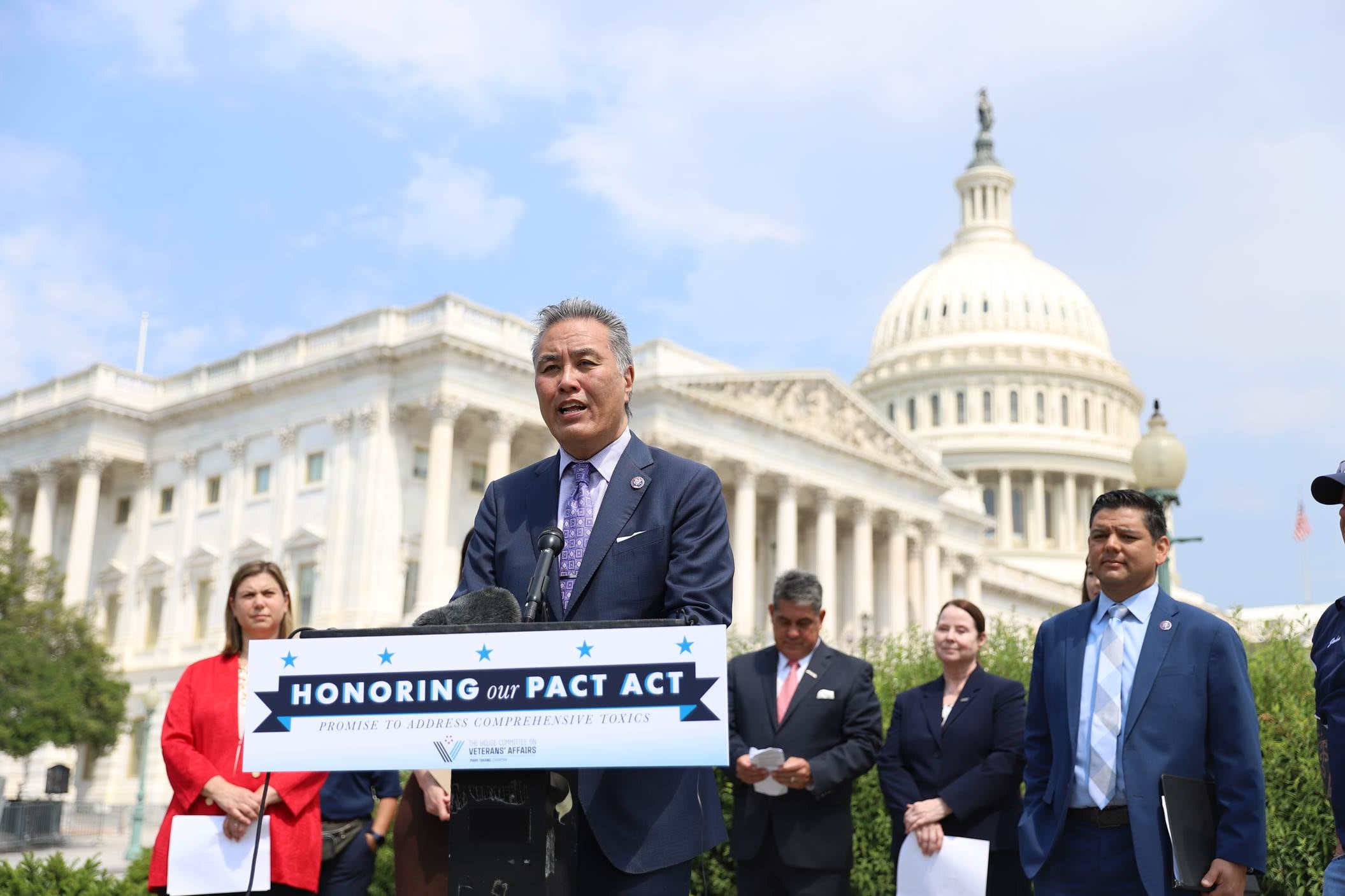Congress may be on the verge of passing the most comprehensive legislation dealing with military toxic exposure issues in 30 years, potentially granting new health care and disability benefits to one out of every five living American veterans.
Or they could be headed to another round of legislative gridlock and advocacy heartbreak in the effort to full recognition of the danger of burn pit exposure and other military contaminant hazards.
“We know the path ahead still won’t be easy, but with the commitment we’re seeing today, the possibility of passing comprehensive toxic exposure legislation has never been greater,” said Joy Illem, national legislative director for Disabled American Veterans, during a Capitol Hill press conference on Wednesday. “This is long overdue.”
RELATED

The event — featuring numerous veterans groups, House Veterans’ Affairs Committee members and comedian Jon Stewart — was the official unveiling of the newly crafted Promise to Address Comprehensive Toxics (PACT) Act.
Supporters hailed it as the most ambitious legislation on the topic of military toxic exposure since the Agent Orange Act of 1991, which for the first time granted presumptive disability benefits status to all troops who served in Vietnam because of the widespread use there of the chemical defoliant Agent Orange.
“Toxic exposure is a cost of war,” said committee Chairman Mark Takano, D-Calif. “It’s time America makes good on our promise to care for all veterans exposed to toxic substances.”
The PACT Act adds hypertension to the list of illnesses covered for Vietnam veterans, a move that will potentially grant 150,000 elderly veterans access to disability payouts. It also includes presumptive status for radiation poisoning for thousands more veterans who served in areas where nuclear testing and weaponry was used.
But the most striking portion of the bill would be recognition that all troops who served in Iraq and Afghanistan likely suffered some level of poisoning from burn pits used extensively throughout the country, even though scientific specifics on the chemical vapors present remain incomplete.
The legislation establishes a list of 23 cancers and respiratory illnesses believed linked to the toxic smoke, allowing veterans who served in the countries and later contract the conditions to skip eligibility and verification processes for VA benefits.
“If we can get those presumptions, that’s a major strategic victory,” said Rep. Raul Ruiz, D-Calif., a former emergency room doctor who has been pushing for burn pit legislation for several years. “This must be the year that we send a bill to the president and turn it into law, and the most important part is the extensive list of presumptions.”
Altogether, more than 3.5 million veterans could see some benefit change under the scope of the House bill.
Earlier this month, Senate Veterans’ Affairs Committee members offered their own similarly sweeping toxic exposure legislation, the Comprehensive and Overdue Support for Troops (COST) of War Act. The measure has a shorter list of presumptive conditions tied to burn pit smoke and a different approach to future reviews of toxic exposure issues.
The committee advanced the measure on a bipartisan voice vote on Wednesday, allowing lawmakers to move ahead with plans to take it to the full Senate for consideration later this summer.
But the bipartisan approval came with several large caveats.
Several members said they still want to get an estimate of the total cost of the measure — Sen. Thom Tillis, R-N.C., said the price tag may hit “hundreds of billions of dollars” — before they back it in a full chamber vote.
Senate committee ranking member Jerry Moran, R-Kan., said he also has concerns that the scope of the new benefits could overwhelm VA claims processing, already strained from months of pandemic closures and business adjustments.
RELATED

House Republicans have not yet signed onto the measure, although Takano said several GOP-backed bills are included in his legislation and he is confident they can find bipartisan agreement on most of the issues.
And Moran has said he still wants more feedback from VA officials on how they intend to implement the massive legislative proposal. Takano said that he is meeting with VA Secretary Denis McDonough to discuss those issues on Friday, and that department officials so far have been cooperating behind the scenes to move the legislation forward.
For veterans advocates, that’s a reason for optimism, even if much work lies ahead.
“[Veterans] must know when and where they were exposed and to what,” said Coleen Bowman, a senior advisor at the Tragedy Assistance Program For Survivors whose husband, former Army Sgt. Maj. Robert Bowman died of cancer in 2013.
“Had we known what my husband was exposed to, we could have informed the doctors earlier. It wouldn’t have taken 6 months of misdiagnosis before we were told he had stage 4 inoperable cancer. When we send our service members to war, we must be prepared and willing to take care of them when they return home.”
Both Takano and Tester said they hope to pass their respective bills out of their chambers later this summer, with a goal of reconciling them this fall and finalizing the legislation before the end of the year.
That would mean rulemaking could start early next year, with payouts and new medical benefits beginning no earlier than 2022, still more than a year away for veterans and families already struggling with health issues that have lingered for years and decades.
“Time is a luxury that many ill veterans just don’t have,” said Aleks Morosky, government affairs specialist at the Wounded Warrior Project. “The time to act is now.”
Leo covers Congress, Veterans Affairs and the White House for Military Times. He has covered Washington, D.C. since 2004, focusing on military personnel and veterans policies. His work has earned numerous honors, including a 2009 Polk award, a 2010 National Headliner Award, the IAVA Leadership in Journalism award and the VFW News Media award.




